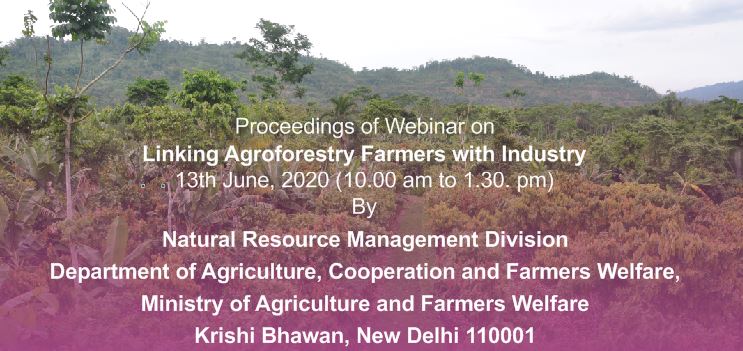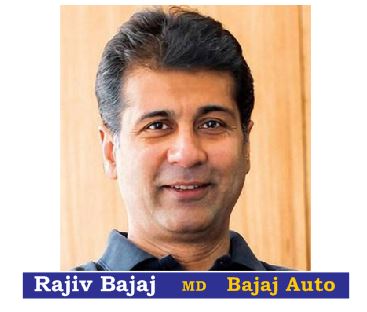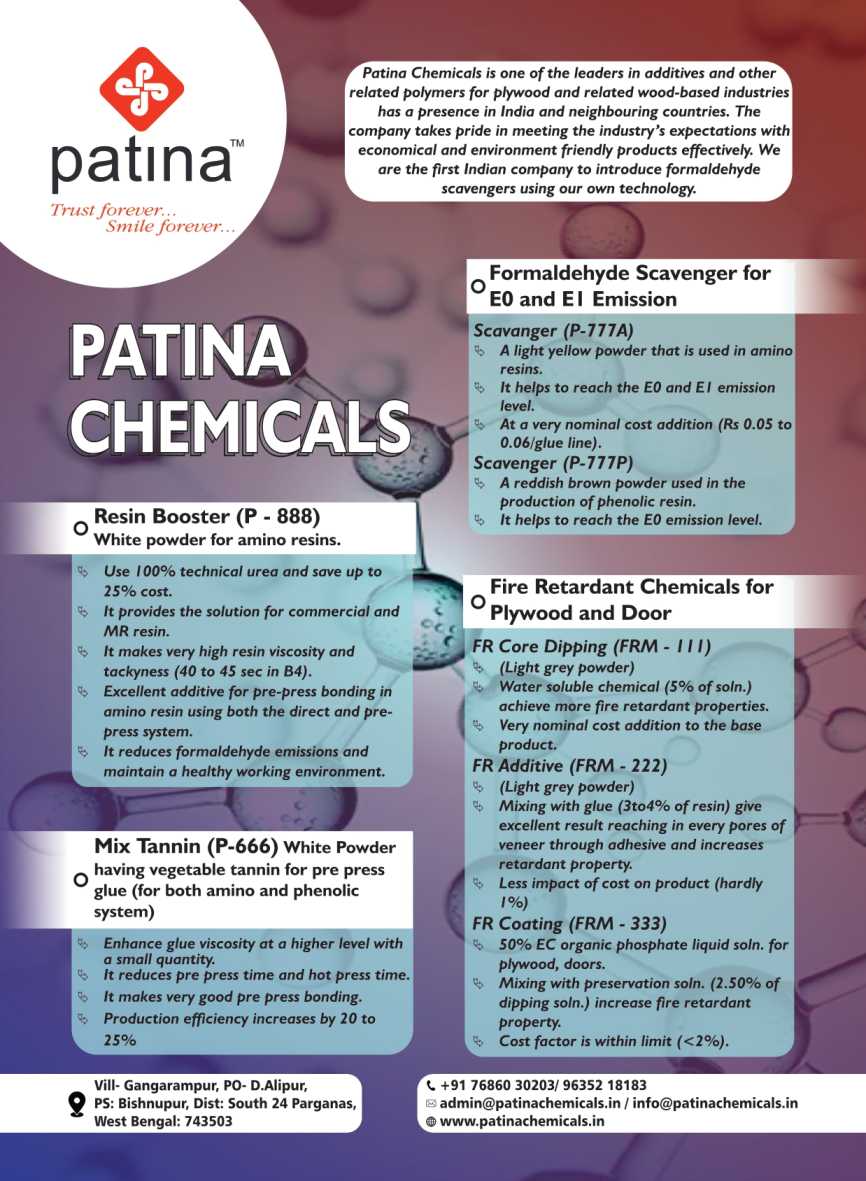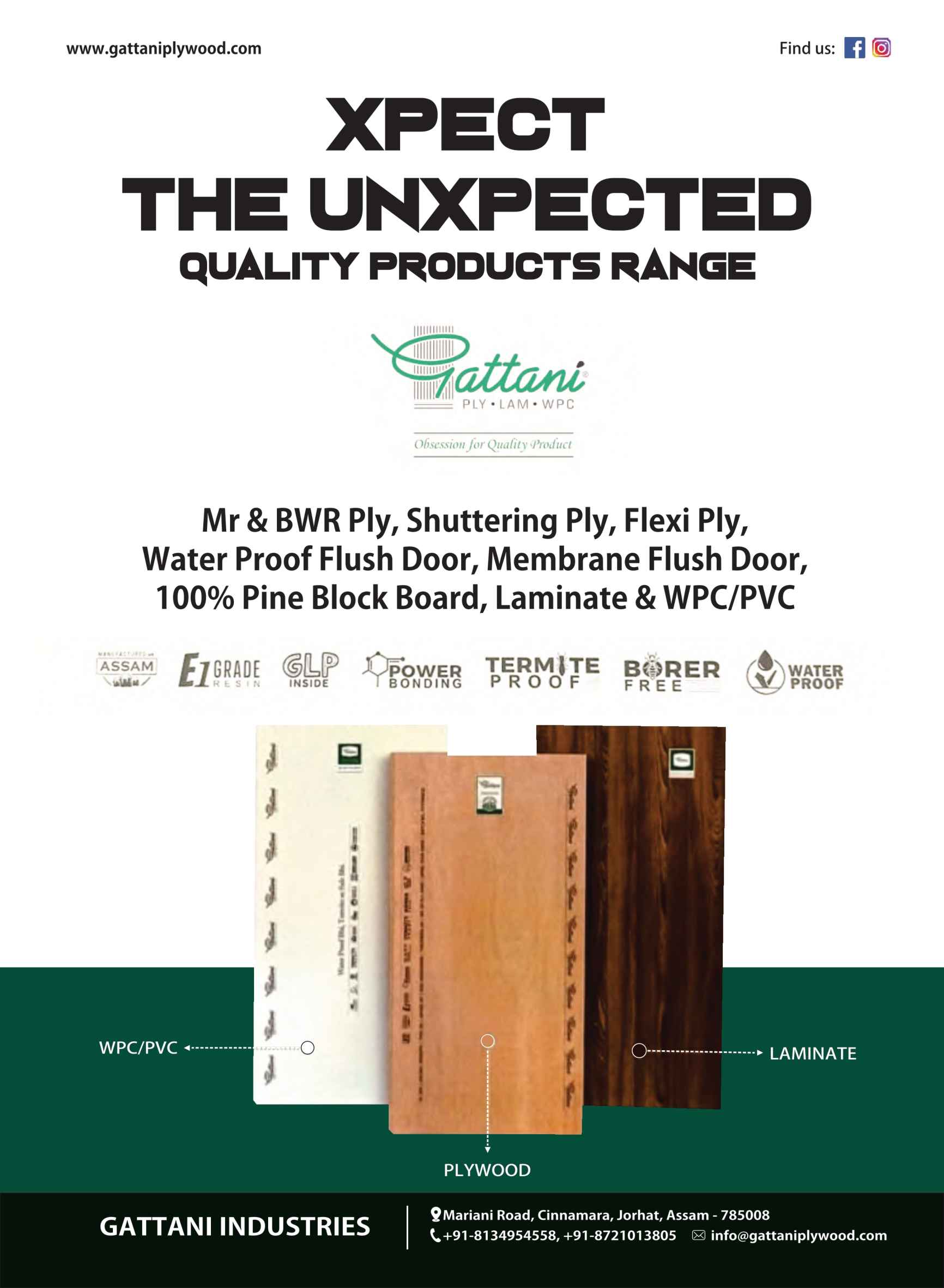
Proceedings of Webinar on
- June 27, 2020
- 0
BACKGROUND
Government of India formulated the National Agroforestry Policy in 2014 in the background of agroforestry not gaining the desired importance as a resource development tool inspite of major policy initiatives, including the National Forest Policy 1988, the National Agricultural Policy 2000, National Bamboo Mission 2002, Green India Mission 2010, to name a few of them. Some of the limiting factors include restrictive legal provisions for harvesting & transportation of trees planted on farmlands and use of non-timber produce, near non-existent extension mechanisms, lack of institutional support mechanisms, lack of quality planting materials, inadequate research on agroforestry models suitable across various ecological regions of the country, inadequate marketing infrastructure and price discovery mechanisms, lack of post-harvest technologies etc. Hence, this policy was recommended for setting up of a Mission or Board to address these lacunae present in the agroforesty sector in an organized manner. The Sub-Mission on Agroforestry (SMAF) under NMSA is an initiative on this, was launched in 2016-17 .The scheme is being implemented in the States which have liberalized transit regulations for selected tree species. So far the scheme is operational in 20 States and Two UTs across the country. The major objectives of the Sub-Mission are to encourage and expand tree plantation in complimentary and integrated manner with crops and livestock on farm land; ensure availability of quality planting material; popularise various Agroforestry practices/models; create database, information and knowledge support in the area of agroforestry; provide extension and capacity building support to agroforestry sector.
The mission objectives shall promote Agroforestry in India towards incentivizing and increasing adoption among the farmers to make them self-reliant and economically independent. To achieve this, emphasis is laid down on creation of commercially viable plantations, cultivation of species required by industry, Skilling of farmers, entrepreneurs and field functionaries, Enhance capacity of relevant stakeholders, to develop agro-forestry models/demo plots in KVKs and farmers‟ fields and linking agroforestry growers with emerging industrial uses such as Tree Borne Oilseeds, Silk, Lac, beauty and wellness sector, etc. and Rationalization of area under Plantation for financial assistance. Conducting a Webinar on “Linking Agroforestry farmers with Industry” is an effort towards achieving some of the above mentioned goals under Sub Mission on Agro-forestry being implemented by Ministry of Agriculture and Farmers Welfare.
Dr. Alka Bhargava, Additional Secretary, DAC&FW welcomed Shri Sanjay Agarwal, Secretary (AC&FW), eminent speakers, State Mission Directors and representatives of research and development organizations, representative of industries and others participants attending the webinar. Agroforestry has huge potential in bringing additional income for the farmers, risk management as well as increasing domestic supply to the wood based industries of the country as well as the various other emerging sectors. It was with these potential sectors in mind, the webinar had been structured to educate the States to assist farmers in growing multi purpose tree species, beyond simply timber, long rotation of which often dissuaded farmers for adopting the tree farming.
Sh. Sanjay Agarwal, Secretary (DAC & FW) in his opening remarks, congratulated for organizing Webinar on Agroforestry which is a sector of great potential for increasing the farmers income by linking them with relevant industries. He dwelt upon the recent initiatives of the Dept in terms of cereal and pulse production, making available good quality seeds and fertilizers, e- marketing etc. He also briefed about the recent ordinances passed for inter and intra state trading as well as price assurance before harvest of crop. These reforms shall allow farmers in selling their produce in markets other than APMCs. Farmers can also partner directly with the seller and FPOs can play a major role in this partnership.
Secretary further reiterated the numerous benefits and vision of agroforestry which is an effort towards making farmers economically independent as it can provide additional income, good quality raw materials to industries and help mitigating effects of climate change by means of carbon sequestration. He requested all the participants to come forward to motivate and train the farmers in adopting the Agroforestry models including suitable species of medicinal plants; for paper, pulp & plywood industries; sericulture; and as raw material for other industrial use. He emphasized on the need to focus on creating and strengthening the farmers groups, self-help groups (SHGs), farmer producer companies, value chain producers etc. for working in this sector. He appreciated the efforts made by the NRM division of the Ministry in implementing the SMAF Scheme and organizing the Webinar on the Agroforestry with all relevant and special presentations to materialize the objective of linking farmers with various industries through adoption of Agroforestry.
TECHNICAL SESSION
During the technical session of the webinar, four eminent speakers from different sectors and industry made their presentations. A brief record of presentations and discussions are summarized as below:
- Opportunities for the farmers in raising medicinal and aromatic plants in Agroforestry: by Dr J.L.N. Sastry, Chief Executive Officer, National Medicinal
Plant Board (NMPB).
Dr. Sastry in his opening remarks mentioned that the agroforestry can be converged with their various schemes based on medicinal plants models which are quite remunerative subject to the demand of the market. He further emphasized the importance of medicinal plants in Agroforestry. He gave information about „Ashoka Setu‟ will be formed in 16 States by planting Ashoka trees (Saraca asoka). He gave details about specific medicinal plant species corridor such as “guggul”, “shankhpushpi”, “satavari”, ashwgandha etc. in the different zones of country such as arid, coastal, northern and alpine, southern and central zones. In these corridors region specific medicinal plants species shall be grown. Under this programmes training on sustainable harvesting of tree barks shall be imparted to farmers and growers. He also highlighted on plantation of the plants such as arjun, neem, saal, etc. whose barks have medicinal plants. Dr. Sastry further stated that it is being made compulsory for the industry to use NMPB certified material to deter the exploitation of natural forests. He highlighted about projects in the 5 River Ganga basin States in about 800 hectares of area which are being strengthened by growing herbs and shrubs along with medicinal plants.
Dr Sastry advised that small and marginal farmers in cluster mode and in medium farmers can be attached to FPOs and MSMEs under AYUSH. This initiative can taken in PPP mode wherein which both parties are benefitted. He further mentioned that Deptt. of AYUSH has suggested the National Bee Board to advise the farmers to keep bee boxes for honey collection in the areas with high nectar yielding medicinal plants.
Further he also stated that there is a need to cover the medicinal plants under crop insurance schemes such as PM Fasal Bima Yojana. Lastly he emphasized on the need to provide a sustainable model to the farmers and directly link them with the industry so that they can get premium prices for their produce.
The Secretary (DAC&FW) in his remarks mentioned that proper convergence needs to be ensured with the agroforestry scheme for additional source of income to the farmers. There are several medicinal plants clusters existing in the country that needs to be identified and which can be used as medicinal plants based agroforestry models. On the issue of bringing medicinal plants under crop insurance, the Secretary asked NMPB to chalk out a proposal, which can be examined by the Department.
- Demand and Supply Analysis: Current Demand of raw material by the Plywood and Paper Sector: by Shri Rohit Pandit, Secretary General, Indian Papers Manufacturers Association, New Delhi.
Sh. Pandit stated that the annual turnover for the paper industry is around Rs. 70,000 crore. The industry is undertaking many agroforestry/farm forestry related works and has strong backward linkages with farmers. He said that the industry provides employment to 5 lakh persons directly and indirectly to 15 lakh. Sh. Pandit further elaborated about the enormous potential for growth of this industry and said thatabout 1 million TPA of integrated pulp, paper and paperboard capacity has to be created in India on an annual basis over the current capacity to meet the growing demand.
Sh. Pandit stated that the major chunk of the raw material for this industry is waste paper/recycled fibre (58%), wood/bamboo (25%) and agri-residue (17%). He pointed out that there is huge gap in demand and supply of raw material for paper industry in the country which is a major constraint for the paper industry. He mentioned that over 90% of wood demand is met through industry driven agro/farm forestry and rest 10% through Government and other sources. Thus, there is a huge potential for Agroforestry to supply raw material to the paper industry. Sh. Pandit also gave a comparative account of India with other countries which have favourable policies for commercial plantations.
In his closing remarks, he gave an overview of the agroforestry/farm forestry driven pioneering work that the industry has carried out in the last three decades in producing tree saplings which are disease and drought resistant and can be grown in a variety of agro-climatic conditions. A large part of trees are grown in backward marginal/sub- marginal land, which is potentially unfit for other use. Thus, it will help facilitate Hon‟ble PM‟s vision of “Atmanirbhar Bharat” and help in doubling the farmers‟ income as well as increase green cover and will save the environment . Dr. Alka Bhargava, Additional Secretary, suggested that agri residue can also be used in larger proportion for benefit of farmers and requested the States to identify the gaps and try to fill those gaps. The industry should inform farmers of those species which are needed so that it can be grown on their farm lands that will ultimately lead to less imports of raw material due to increased competitiveness. State Govt s to work closely with industry while planning and execution.
III. Importance of Quality Planting Material in Agro Forestry: by Dr. H.K. Kulkarni, Former VP, ITC, Bhadarachalam, ITC Limited- Paperboards and specialty Papers Division , Secundrabad, Telangana.
Dr. Kulkarni presented an account of importance of Quality Planting Material (QPM) in agroforestry and its relevance in linking farmers with the industry. He stressed that Quality Planting Material can create impact in respect of internal and external perspective and link agroforestry farmers to the industry. He further highlighted the internal perspective which are majorly the requirements by the pulp and paper industry, plywood and panel industry, furniture and handicraft industry, construction timber. He then discussed the external perspectives, which are the requirements in the QPMs needed by the farmers.
He informed that the R&D developed clones/hybrid clones are characterised with properties to meet the internal perspective. He laid importance on QPMs which produced trees with the desired properties and revolutionize pulp & paper industry. For pulp production, QPM gave Rs. 6 cr/ton of pulp advantage. Subsequently, the chemical consumption and pollution load are also reduced. Dr. Kulkarni elaborated upon impact of Quality planting material on Plantation Productivity that shows significant shift in production of clonal variety with the normal varieties in Agroforestry Model. He emphasised upon creating the sustainable value based Business for farmers and Business to industry and stressed that farmers should be treated as partner of the Industry.
- Prospects of Silk cultivation in Agroforestry: by Shri. Rajit Ranjan Okhandiar, Chief Executive Officer and Member Secretary, Central Silk Board, Bangalore,Karnataka,
At the outset, Shri Rajit Ranjan Okhandiar gave a brief on the working of the Central Silk Board and expressed his desire about associating agroforestry with silk industry. He mentioned about sericulture as an agro-based remunerative employment which provided economically viable livelihood opportunities. In this sector, 57 % of the income goes to the farmers therefore it is a very successful model of income generation. Sericulture requires less investment, early returns to farmers and environment friendly activity.
He suggested considering Sericulture as viable Agroforestry Model since both SMAF and sericulture promotion have common objective of increasing the tree coverage and enhancing farmers‟ income. The interventions taken under SMAF like Peripheral and boundary plantation, Low density plantation (intermediate/strip plantation) on farm lands and High density block plantation are suitable for sericulture. He further mentioned that there are no legal restrictions on harvesting & transportation of produce. The required backward and forward linkages in silk value chain are already available which can provide good returns to the farmers.
He further discussed about two types of Agroforestry-Sericulture based model under Peripheral and Boundary Plantation [PBP], Low density plantation on Farm Lands [LDPFL] and High Density Block Plantation (HDBP) and their economics in each type. While concluding Shri Okhandiar stressed upon demo plots for sericulture for awareness generation to the farmers. States can can organize workshops in association with KVKs for awareness generation. He further mentioned that the rainfed areas of the country can be brought under Sericulture. To increase the area under sericulture, the lands allotted to tribals under the FRA can also be used for this activity.
Dr. Alka Bhargava, AS (NRM) remarked that besides KVKs, the extension activities can be undertaken under ATMA led by Extension Div of DACFW but implemented by the States. Capacity of ATMA officials should be built to provide technical support to the farmers. She mentioned that the Integrated Farming System (IFS) is being implemented under the Rainfed Area Development (RAD) programme of this Department. Sericulture based IFS models can also be promoted under this programme. A suitable strategy needs to be followed to take advantage of multipurpose species by the farmers.
The States such as Karnataka, Tamil Nadu, Gujarat, Telangana, Jammu& Kashmir and Mizoram shared their initiatives and good work under SMAF. Some of the farmers also shared their experience and benefits incurred through agroforestry.
Dr. A.K. Handa, Director, TFRI, Jabalpur and Dr. Dhyani, ICRAF gave their valuable suggestions to incorporate in linking of Agroforestry with industry. They highlighted on various agroforestry models prepared by their organizations and adoption of such models which can be taken up by the States.
The following actionable points emerged after the detailed discussions:
- The motto of the SMAF scheme “Har Med par Ped” should be practiced on farmland then Agroforestry will play a major role in achieving the goal of Hon‟ble Prime Minister towards “Atmanirbhar Bharat”
- All states should take initiatives for Contract Farming. By doing large scale plantation of Quality planting material, one can reverse the trend of imports in favor of farmers
- QPM including clones of Agroforestry tree spp. which have greater productivity and industrial scope should be extended to farmers
- States should incorporate new activities including medicinal plants in their Annual Plan of operation for 2020-21 under SMAF for transforming those activities in the fields with the help of R&D Institutes, State Government and other Institutions.
































































